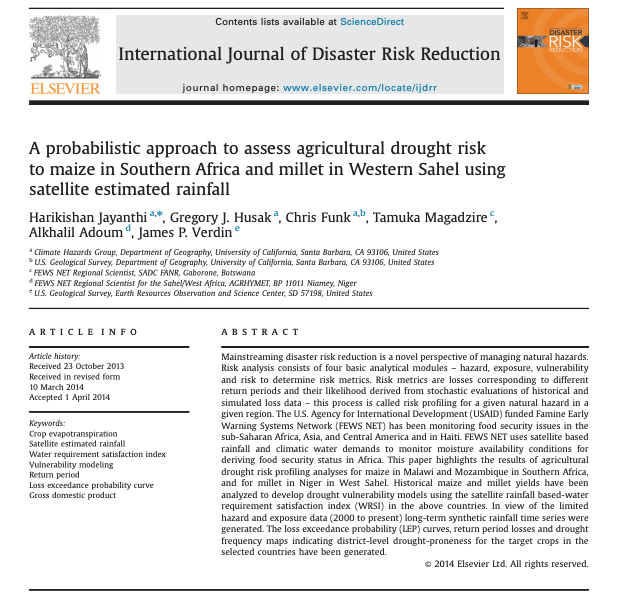Featured: A probabilistic approach to assess agricultural drought risk

Mainstreaming disaster risk reduction is a novel perspective of managing natural hazards. Risk analysis consists of four basic analytical modules – hazard, exposure, vulnerability and risk to determine risk metrics. Risk metrics are losses corresponding to different return periods and their likelihood derived from stochastic evaluations of historical and simulated loss data – this process is called risk profiling for a given natural hazard in a given region. The U.S. Agency for International Development (USAID) funded Famine Early Warning Systems Network (FEWS NET) has been monitoring food security issues in sub-Saharan Africa, Asia, and Central America and in Haiti. FEWS NET uses satellite-based rainfall and climatic water demands to monitor moisture availability conditions for deriving food security status in Africa.
This paper highlights the results of agricultural drought risk profiling analyses for maize in Malawi and Mozambique in Southern Africa, and for millet in Niger in West Sahel. Historical maize and millet yields have been analyzed to develop drought vulnerability models using the satellite rainfall based-water requirement satisfaction index (WRSI) in the above countries. In view of the limited hazard and exposure data (2000 to present) long-term synthetic rainfall time series were generated. The loss exceedance probability (LEP) curves, return period losses and drought frequency maps indicating district-level drought-proneness for the target crops in the selected countries have been generated.